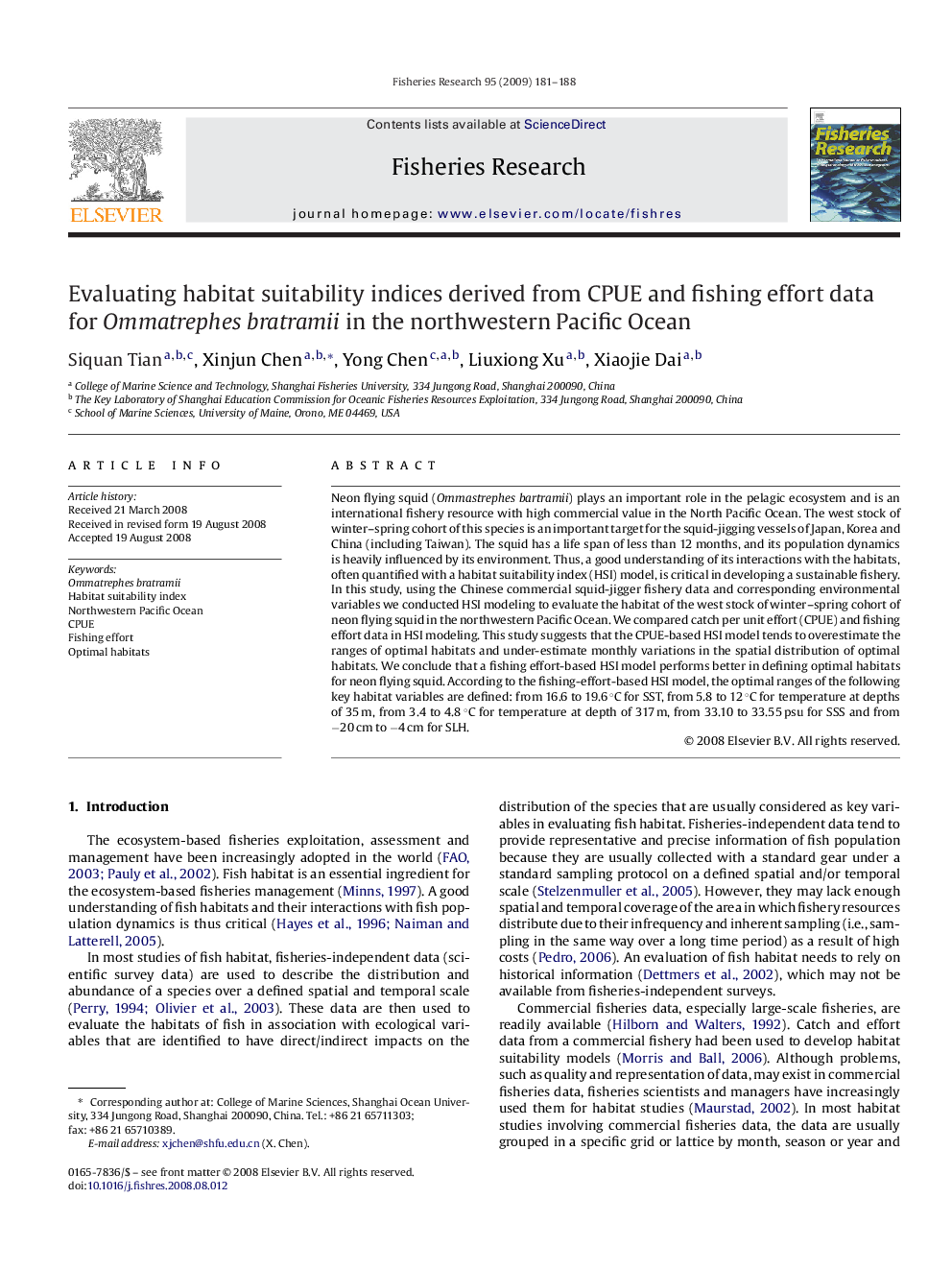| کد مقاله | کد نشریه | سال انتشار | مقاله انگلیسی | نسخه تمام متن |
|---|---|---|---|---|
| 4544151 | 1626857 | 2009 | 8 صفحه PDF | دانلود رایگان |

Neon flying squid (Ommastrephes bartramii) plays an important role in the pelagic ecosystem and is an international fishery resource with high commercial value in the North Pacific Ocean. The west stock of winter–spring cohort of this species is an important target for the squid-jigging vessels of Japan, Korea and China (including Taiwan). The squid has a life span of less than 12 months, and its population dynamics is heavily influenced by its environment. Thus, a good understanding of its interactions with the habitats, often quantified with a habitat suitability index (HSI) model, is critical in developing a sustainable fishery. In this study, using the Chinese commercial squid-jigger fishery data and corresponding environmental variables we conducted HSI modeling to evaluate the habitat of the west stock of winter–spring cohort of neon flying squid in the northwestern Pacific Ocean. We compared catch per unit effort (CPUE) and fishing effort data in HSI modeling. This study suggests that the CPUE-based HSI model tends to overestimate the ranges of optimal habitats and under-estimate monthly variations in the spatial distribution of optimal habitats. We conclude that a fishing effort-based HSI model performs better in defining optimal habitats for neon flying squid. According to the fishing-effort-based HSI model, the optimal ranges of the following key habitat variables are defined: from 16.6 to 19.6 °C for SST, from 5.8 to 12 °C for temperature at depths of 35 m, from 3.4 to 4.8 °C for temperature at depth of 317 m, from 33.10 to 33.55 psu for SSS and from −20 cm to −4 cm for SLH.
Journal: Fisheries Research - Volume 95, Issues 2–3, 14 January 2009, Pages 181–188